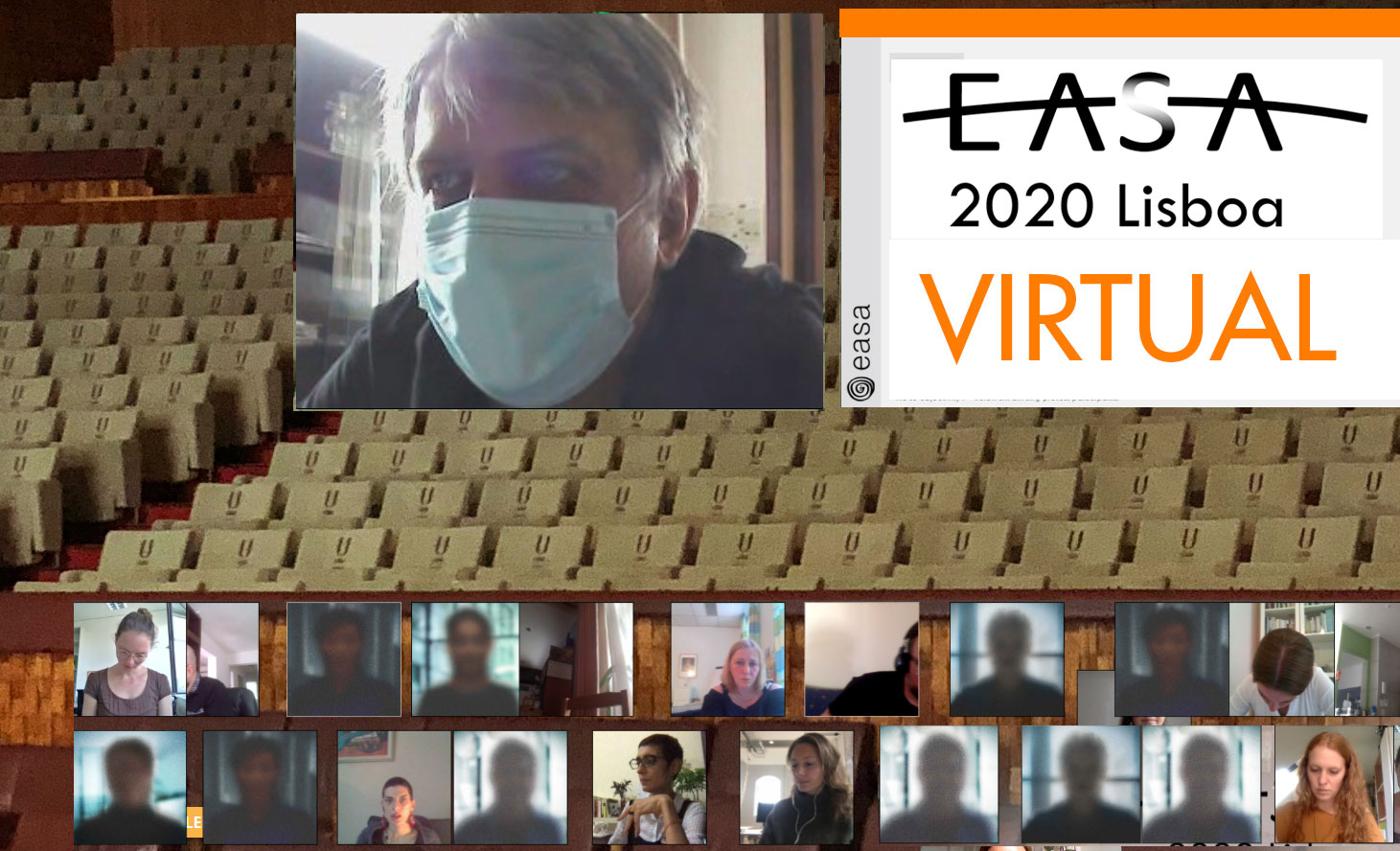Read the PDF version Newsletter archive Newsletter 77 Table of Contents
EASA2020 online experience
A summary presentation of the feedback received from over 684 delegates via our online survey.

Many thanks to all those who submitted feedback via the online survey. We had a 38% response rate. The quantitative data is summarised below. On the whole, under the circumstances, there was satisfaction that the event went ahead online, with the quality of support, preparation and choice of platform. Of course there were a diverse range of opinions shared in the qualitative responses. The responses can be read in full here.
Attendance
The virtual log-in data suggests that attendance was pretty even through the event, with a peak on the second day. Panels/roundtables averaged 35 attendees (not including convenors), the film sessions averaged 25 and labs 17. 25% of panels had more than 40 attendees and the best attended had 140 - suggesting slightly higher attendance at panels than in face-to-face (F2F) events, particularly on the final day. On the contrary plenary events had lower attendance than at F2F events - but they had high appreciation scores.Nearly half attended the additional events (book launches, network meetings, social events, etc) with the majority feeling we had the right number of these in the programme.
15% of respondents attended just their own panel; 25% fewer than three panels/events; 40% attended more than three, and 15% said they attended most events, dropping in to lots of things, similar to an in-person event.
Delegates
Delegates came from 64 countries (14% Germany, 10% UK, 8% Portugal), 90% being institutionally affiliated, 42% in full-time employment, 26% student, and 48% with annual income below €25,000 (28% below €15,000). 79% expected to remain within academia in the foreseeable future, 81% unsurprisingly identified anthropology as their primary discipline, with about half seeing EASA as their main conference. Similar numbers had their fees covered by employer/grants as had to cover this themselves.
71% of respondents would have attended the conference if it was F2F; the 11% who said they would not mostly stated financial reasons for this, although time-saving and carbon footprint were also issues.
Conference
The conference received a rating of 3.9 out of 5, with 73% selecting 4 or 5. Nearly half felt that the virtual event managed to meet most of their requirements for an academic event. 16% felt that it fell short of their expectations, while for 20% it exceeded theirs.
40% of respondents felt 4-5 days of online conference was too long and there was little support for thinning an online event out over a longer period. As we would expect caring commitments coincided with the event (25% Childcare, 7% Home-schooling, 17% Care of other relatives) - but the main competing call on time was cited as other work (80%). No wonder that 63% said that ideally they’d take time off usual work to focus on a future conference.
The most selected advantages of the virtual format were the time, hassle and resources saved attending from home, the environmental benefits and the lower participation cost. The most missed features of F2F events were ease of networking, the atmosphere, local environment and conference buzz; and finding it hard to fully engage with online conference and get away from home/work life. Obviously online fatigue and technical glitches marred enjoyment.
Platform
The vast majority felt that the training, preparation, volunteers/support and technology worked well. (This is not to ignore the 2% of convenors and 4% of presenters who felt unable to carry out their roles successfully.) Despite the increased demands of the Shindig platform over the use of Zoom, 70% supported the choice of platform. Needless to say there were plenty of negative comments about it in the qualitative responses.
Networking
57% of respondents made no use of the virtual coffee/book exhibit/publishers room, primarily due to lack of time. 20% of those who did, used the coffee room for pre-agreed meetings, while a third left it to chance. 52% made no use of the private chat feature while in the audience, citing shyness or feeling it would be rude while others were presenting. The majority of those who did use it felt it worked well to network and meet others.
Desire for the future
Respondents were asked to rank their preference for future EASA conference formats and there was a clear preference for F2F with increased possibilities of online involvement. Some felt there might be scope to alternate this with a fully online event.






